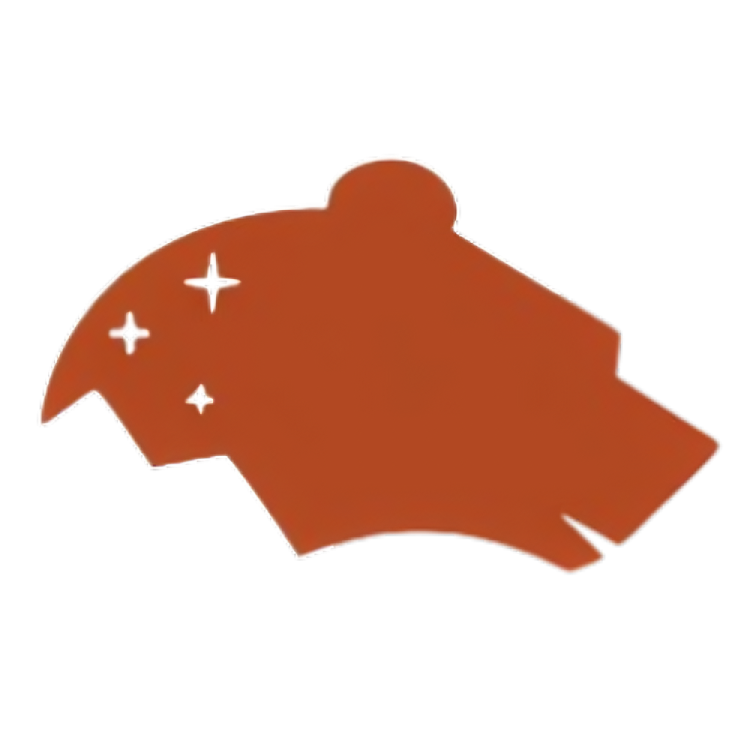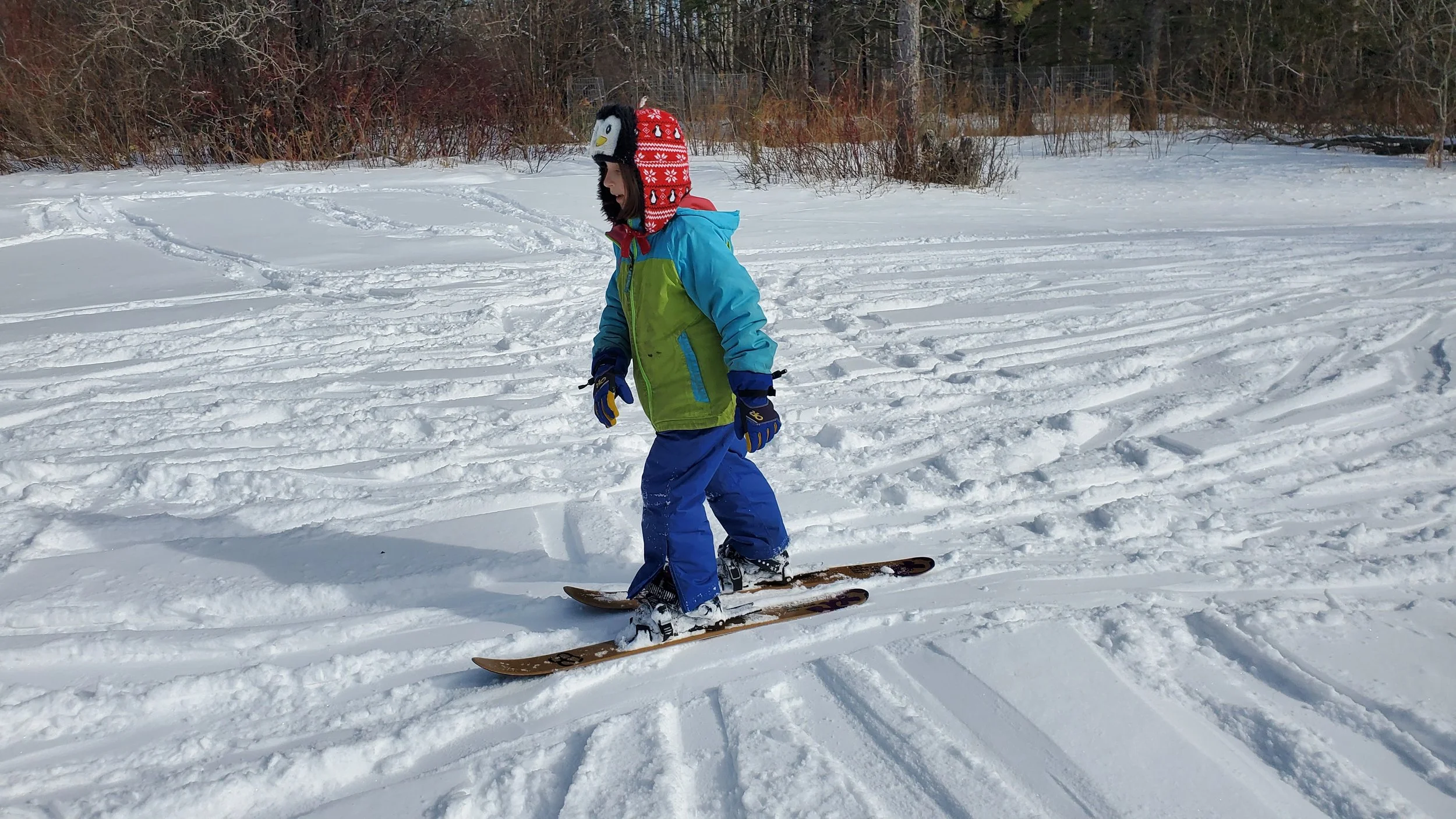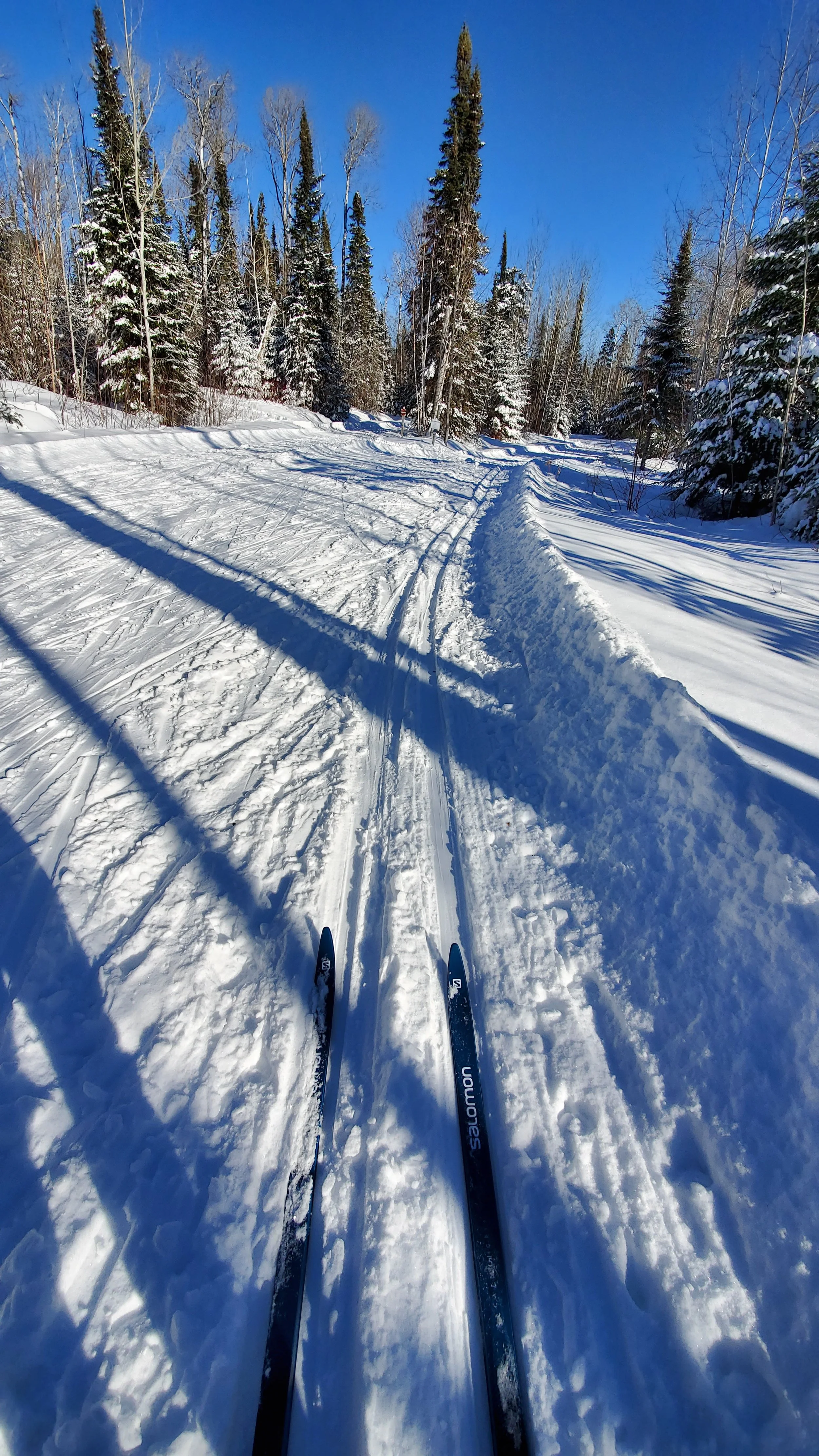Sizing Gear for Cross Country Skiing
Inches.. centimeters… US…. UK.. Oh my!
There are two main ways to enjoy cross-country skiing (commonly known as “Nordic skiing”): You can either classic ski or skate ski. With each one, your heel is always “free” (not connected to the ski as with downhill skiing) and you use your muscles and gear to move yourself forward. But there are some key differences:
Classic skiing uses a forward and back striding motion that resembles how you walk or run. The familiarity of the motion makes it a logical starting point for new cross-country skiers. Many beginners, including families, can enjoy shuffling along on trails even if they’ve never had skis on before.
Skate skiing technique resembles that of a speed skater on ice. As you push your skis out to the side, you use the edges of your skis to propel yourself forward. It’s a fun and fast activity that many people can learn to enjoy, but it’s not usually where beginners start.
The gear for classic skiing and skate skiing differs some, though not dramatically—to the untrained eye it can all appear the same. Getting the right gear can be the difference between a fun day spent on the trails and a day spent fighting your equipment. We’ve collected our best tips, tricks and resources from our favorite brands and reps so you can choose skis, boots and poles with confidence.
Choosing Skis
To choose the right cross-country skis, first think about where you want to go and what type of skiing you’re looking to do, then choose the type of skis that align with that.
We’ll start with three common types of skis that fall into the category of classic skiing:
Cross-country touring skis are designed for skiing on groomed trails with a forward and back striding motion similar to how you walk or run. The skis are generally long, narrow and lightweight for fast and efficient skiing in groomed tracks. Some cross-country touring skis have a shorter design that makes them a bit easier to turn and control, making them a popular choice among beginners. Cross-country touring skis are a great option for people who want to have a fun time and get some exercise but aren’t in it to get a major workout or set a course record.
Race and performance classic skis are similar to touring skis in that you use them in the groomed tracks, but they’re built for faster, more aggressive skiing. Race and performance skis generally have a stiffer flex than touring skis, making them less forgiving and requiring better technique. Even if you’re not a racer, these skis are great for people who want to move quickly and get a workout on groomed trails.
Metal-edge touring skis are made for skiing out-of-track or on steeper terrain. Compared to touring skis, they are typically shorter for better maneuverability and wider for more stability and flotation in deeper snow, and they have metal edges for better grip in icy conditions. Their greater sidecut enhances turning ability on steeper slopes. All these features make them heavier than touring skis but more suitable for out-of-track terrain.
Skate skis are used on groomed trails to ski along similar to how a speed skater moves on ice. The skis are light, skinny and stiff, and they are generally about 10cm shorter than skis for classic skiing. It’s worth pointing out that skate skis are not designed for striding as you do while classic skiing.
Ski Sizing
A special feature of classic cross-country skis is the climbing zone. To move forward, you need good grip, especially when ascending. Therefore, the climbing zone needs to interlock with the snow so you can walk uphill. Your body weight is crucial for pressing the skis into the snow. When your body weight is appropriately matched to the ski length, the skis will support your weight and deliver the optimum combination of grip and glide. If you get skis that are too short, you won’t glide like you should. Get skis that are too long and you’ll struggle to get good grip. A simple formula for length calculation would be:
Body size (cm) + 20-30 cm = ski length
Whether you use 20, 25, 30 cm or something in between in this formula depends on your level of experience. If you are just starting out with cross-country skiing, the ski may well be chosen a bit shorter. For advanced skiers, longer models are suitable. Longer skis tend to be faster than shorter ones. So if you find yourself between sizes, think about your skiing ability.
Skate skiing sizing is different because the skating ski itself has no climbing zone and is much stiffer than a classic cross-country ski. As far as the length is concerned, you can take the following formula as a rule of thumb: Body size (cm) + 10-15 cm = ski length. Instead of adding 10 cm absolute skating beginners can also get started using skis only 8 cm longer than their body size.
The following rule of thumb can be used for kids:
Skating: For beginners take the body size and subtract 5 to 10 cm. For advanced kids take the body size and add 5 cm to 10 cm
Classic: For beginners take the body size and add + 10 cm, for advanced kids take the body size and add 10 cm - 20 cm
Because flex, materials and other design characteristics vary, each pair of skis has a specific recommended weight range for each available ski length (ski size). You can find this info in the “recommended weight range” spec on our product pages or in manufacturer size charts. Be wary of using a generic size chart because ski sizing is not standardized between brands, and varies for different models of skis within the same brand.
Choosing Boots
Finding comfortable boots is key to your enjoyment on the slopes. Blisters on your heels or toes that are scrunched can quickly end an otherwise great day. When trying on boots, wear a pair of wool or synthetic ski socks. A good fit means boots are comfortable and hold your feet solidly in place. You should have room to wiggle your toes to keep them warm.
When shopping for cross-country ski boots, it's important to choose boots that match the type of skiing you're doing.
Boots for cross-country touring: When shopping for boots for touring, look for a combination of flexibility for striding and torsional rigidity for turning and stopping. Some boots have extra features such as lace covers and rings for attaching gaiters. These features can be especially helpful for keeping snow out of the boots if you venture out of the tracks into ungroomed snow. Boots for cross-country touring often emphasize comfort and have a bit more insulation in them than boots for race and performance skiing.
Boots for race and performance classic skiing: These boots are typically lighter weight than touring boots, and sometimes have lower cuffs for a greater range of motion.
Boots for metal-edge touring skis: These boots are stiffer to provide greater support for turning. They still have flexibility, but are higher cut, warmer and more durable than general touring boots. Some have a plastic “exoskeleton” for extra rigidity.
Boots for skate skiing: Skating boots offer more ankle support than those for classic skiing to help protect against the twisting forces involved in the skating technique. They also have stiffer soles to help minimize torsional and forward flex, both of which can hamper skating performance.
Boots for skate skiing and classic skiing: There are some boots available that are designed for both skate skiing and classic skiing. They are called combi boots and have a blend of features that allow them to perform pretty well for both styles of skiing. If you skate ski and classic ski, buying combi boots can be a great way to save money as you will only need to purchase one pair of boots.
Once you’ve found the right boots, you can move on to finding the right poles.
Choosing Poles
To complete your ski setup, you need a quality pair of poles. As you shop, keep in mind the type of skiing you plan to do and consider things like materials, baskets, straps and length.
For cross-country touring, skiers typically size poles so that they reach from the ground up to their armpits.
For race and performance classic skiing, you may want to size them a few centimeters longer.
For skate skiing, you go longer even still—the poles should reach from the ground up to a point somewhere between your chin and lips.
For metal-edge touring, the proper length of poles really depends on where you intend to go. For flat or gently rolling ungroomed terrain, you’ll size them like touring poles. For more rugged terrain, size them shorter. Telescoping poles are a great option for this type of skiing because they allow you to set the length just where you want it and adjust it as you go.
When shopping for poles in a store, simply grab a pair you’re interested in and hold them next to you with their tips on the floor to see how they fit. If you’re shopping online, this chart will give you a general idea for how long poles for classic skiing and skate skiing should be:
Cross country skiing is a great way to embrace and enjoy winter. We are grateful to have many beautiful trail systems in Cook County, from Pincushion, just 5 minutes up the road, to the Banadad which takes you through the Boundary Waters Canoe Area Wilderness. Stop by to ask about conditions and pick up our trail map.
Want to learn more? Check out our guide for choosing the right snowshoes.





